
The Texas Saltwater Fishing Regulations PDF serves as an essential guide for anglers, detailing rules to ensure sustainable fishing practices. It covers bag limits, size restrictions, and gear regulations, while promoting marine conservation efforts.
Importance of Adhering to Regulations
Adhering to Texas saltwater fishing regulations is crucial for conservation and sustainability. These rules help protect marine life, prevent overfishing, and ensure balanced ecosystems. By following guidelines, anglers contribute to the long-term health of fish populations and habitats. Compliance also safeguards fishing opportunities for future generations and supports environmental protection. Ignoring regulations can lead to penalties and harm the delicate balance of marine ecosystems, emphasizing the need for responsible fishing practices;
Purpose of the Texas Saltwater Fishing Regulations PDF
The Texas Saltwater Fishing Regulations PDF is designed to provide anglers with a comprehensive guide to legal and sustainable fishing practices. It outlines essential rules, including bag limits, size restrictions, and gear regulations, to protect marine ecosystems. The document also serves as a reference for understanding federal and state laws, ensuring anglers comply with conservation efforts and promote the long-term health of Texas’s marine resources. Its clear format makes it an indispensable tool for both novice and experienced fishermen.
Key Components of the Regulations
The regulations outline bag limits, size restrictions, and prohibited species to ensure sustainable fishing practices. They also detail gear restrictions and licensing requirements for compliance.
Bag Limits for Saltwater Fish
Bag limits in Texas saltwater fishing regulate the maximum number of each species anglers can catch and keep, ensuring sustainable fish populations. For instance, red drum and spotted seatrout have specific daily limits. The Texas Saltwater Fishing Regulations PDF offers detailed guidance, aiding anglers in complying with conservation goals. Observing these limits is essential for maintaining healthy marine ecosystems and the long-term sustainability of fish populations in Texas coastal waters.
Size Restrictions for Common Species
In Texas saltwater fishing, size restrictions ensure sustainability. For example, Red Drum must be 20–28 inches, while Spotted Seatrout require a 15–25-inch range. Flounder have no minimum size but a maximum of 20 inches. These limits protect juvenile fish and maintain healthy populations. Anglers must release undersized or oversized catches to comply with conservation goals. Always check the Texas Saltwater Fishing Regulations PDF for the latest size requirements before your trip.
Prohibited Species in Texas Saltwater
In Texas saltwater fishing, certain species are protected to preserve marine biodiversity. Prohibited species include specific sharks like the Atlantic angel, Basking, and Bigeye sand tiger. Anglers must avoid catching these to comply with conservation laws. The Texas Saltwater Fishing Regulations PDF provides a detailed list of prohibited species to ensure sustainable fishing practices and protect vulnerable marine life. Penalties may apply for non-compliance, emphasizing the importance of adhering to these guidelines.

Fishing Gear and Equipment Restrictions
The Texas Saltwater Fishing Regulations PDF outlines allowed gear and prohibited equipment, ensuring sustainable fishing practices and protecting marine life. Restrictions are clearly detailed for compliance.
Allowed Fishing Gear in Saltwater
In Texas saltwater fishing, anglers are permitted to use hook-and-line gear, traps, and nets under specific guidelines. Recreational anglers may use up to two lines in the Gulf; Nets must be handheld and not exceed 14 inches in radius. Crab traps and shrimp trawls are allowed but must comply with size and bait restrictions. The Fish ID & Regulations Mini Card provides visuals and rules for 24 common species, ensuring compliance and sustainable practices.
Prohibited Gear and Equipment
In Texas saltwater fishing, certain gear is prohibited to protect marine life and ensure sustainable practices. Nets, dynamite, and electrical fishing devices are strictly banned. Additionally, gear that can cause habitat destruction, such as dragging dredges in sensitive areas, is not allowed. Longlines and gillnets are also prohibited in many zones to prevent bycatch and protect endangered species. Always refer to the Texas Saltwater Fishing Regulations PDF for specific restrictions to avoid penalties and support conservation efforts.
Licensing Requirements
A valid fishing license is required for saltwater fishing in Texas, with specific permits for commercial and recreational activities. Exemptions apply for certain age groups and residents.
Types of Fishing Licenses in Texas
In Texas, fishing licenses are categorized to accommodate different anglers. Residents and non-residents can obtain recreational saltwater licenses, while commercial fishermen require specific permits. Youth under 17 and seniors over 65 may qualify for reduced-fee or exempt licenses. Licenses can be purchased online or at local tackle shops, ensuring compliance with state conservation goals. A valid government ID is typically required for verification.
Exemptions from Licensing Requirements
Exemptions from licensing requirements in Texas saltwater fishing are granted to individuals under specific conditions. Residents and non-residents under 17 years old are exempt, as are Texas residents on active military duty. Additionally, individuals with disabilities may qualify for exemptions. These exceptions ensure equitable access to fishing opportunities while maintaining regulatory compliance. Always consult the official Texas Saltwater Fishing Regulations PDF for the most accurate and updated information.
Seasonal Fishing Regulations
Seasonal fishing regulations in Texas ensure sustainable fish populations by setting specific timelines for harvesting species. Anglers must consult the Texas Saltwater Fishing Regulations PDF for precise details;
Fishing Seasons for Popular Species
Fishing seasons in Texas saltwater vary by species to ensure sustainability. Red snapper season typically opens in June, while flounder season closes in November. Speckled trout and red drum have year-round access but with specific bag limits. The PDF guide outlines exact dates and exceptions, ensuring anglers comply with closures to protect spawning cycles. Always check the latest updates before planning your trip to avoid restrictions and support conservation efforts.
Closed Areas and Seasons
Closed areas and seasons in Texas saltwater fishing are implemented to protect marine habitats and ensure species sustainability. Specific regions may be closed to fishing during certain times to allow fish populations to replenish. For example, red snapper fishing in federal waters is subject to seasonal closures. Additionally, some shark species, like the Atlantic angel and basking sharks, are prohibited year-round. Always check local guidelines before planning your trip to ensure compliance with these restrictions.
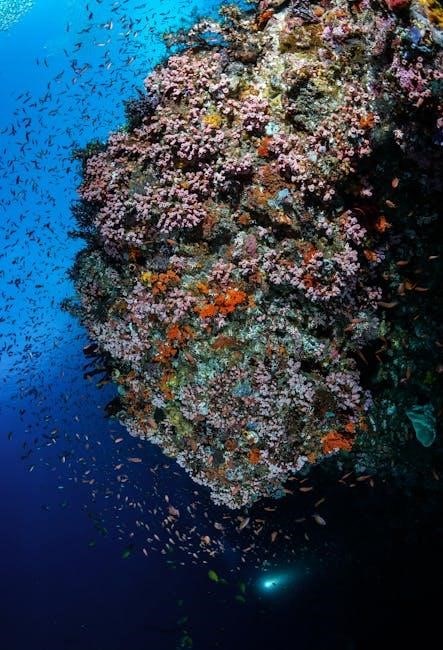
Federal vs. State Regulations
Federal regulations oversee migratory species and marine protected areas, while Texas state laws tailor rules to local species, ensuring a balanced approach to conservation and fishing practices.
Federal Laws Impacting Saltwater Fishing
Federal laws, such as the Magnuson-Stevens Fishery Conservation and Management Act, regulate saltwater fishing in Texas to ensure sustainable fish populations; These laws often overlap with state rules, covering prohibited species, like certain sharks, and enforcing permits for commercial fishing. Federal regulations also address seasonal closures and protected areas, aligning with Texas’s efforts to conserve marine ecosystems while supporting recreational and commercial fishing industries.
State-Specific Regulations in Texas
Texas implements state-specific saltwater fishing rules to manage its coastal resources effectively. These regulations include bag limits, size restrictions, and prohibited species like certain sharks. The Texas Saltwater Fishing Regulations PDF outlines these rules, ensuring anglers understand gear restrictions and protected areas. Compliance with these guidelines helps preserve marine ecosystems while allowing sustainable fishing practices.
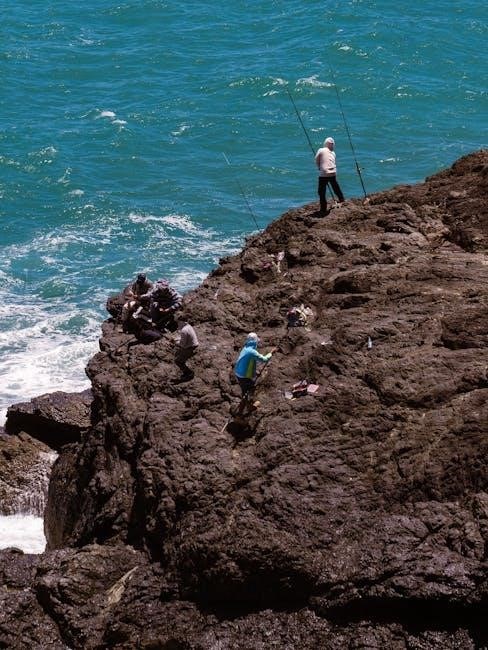
Popular Saltwater Fishing Spots in Texas
Texas offers exceptional saltwater fishing spots, including the Gulf Coast, South Padre Island, and Galveston Bay. These locations are renowned for their pristine waters and abundant marine life.
Best Locations for Saltwater Fishing
Texas offers exceptional saltwater fishing spots, with the Gulf Coast being a prime destination. Galveston Bay and Aransas Bay are renowned for their diverse fish species. The Lower Laguna Madre near South Padre Island is another hotspot, known for its clear waters and abundant marine life. These locations attract anglers seeking redfish, trout, and flounder, making them ideal for both experienced fishermen and newcomers. Always check local guidelines before heading out to ensure compliance with regulations.
Local Guidelines for Specific Areas
Local guidelines in Texas saltwater fishing regulations ensure protection of sensitive habitats and species. These rules vary by region, such as bays, parks, or wildlife refuges, and may include area-specific bag limits, size restrictions, or gear prohibitions. Anglers must consult the Saltwater Fishing Regulations PDF for details on permits, closed zones, and seasonal variations in places like the Lower Laguna Madre or Galveston Bay. Compliance helps preserve local ecosystems and maintains fishing opportunities.

Reporting and Enforcement
Anglers must submit timely catch reports to monitor fish populations. Enforcement agencies ensure compliance with regulations, protecting marine ecosystems and maintaining sustainable fishing practices in Texas waters.
Reporting Requirements for Catches
Anglers in Texas are required to report catches accurately, including species, size, and quantity. This ensures compliance with conservation efforts and data collection for sustainable fishing practices. The Texas Parks and Wildlife Department mandates reporting for certain species, such as red snapper, to monitor fish populations. Physical or digital logbooks are accepted, with specific deadlines for submission. Failure to report can result in penalties, emphasizing the importance of adherence to these regulations for marine conservation. This practice supports long-term fishery management and ecological balance.
Role of Enforcement Agencies
Enforcement agencies, such as the Texas Parks and Wildlife Department, play a vital role in monitoring compliance with saltwater fishing regulations. They patrol coastal waters, conduct inspections, and enforce penalties for violations. These agencies ensure that anglers adhere to bag limits, size restrictions, and gear regulations, protecting marine ecosystems and maintaining sustainable fish populations. Their efforts are crucial for conservation and uphold the integrity of Texas’s fishing resources for future generations.
Tips for Planning Your Fishing Trip
Check bag limits, size restrictions, and gear requirements beforehand. Monitor tide times and weather, and ensure all licenses are up-to-date for a smooth experience.
Best Practices for a Successful Trip
- Check the Texas Saltwater Fishing Regulations PDF for updates on bag limits and size restrictions before your trip.
- Plan according to the season and target species to maximize your catch.
- Prepare gear like rods, reels, and bait that comply with state guidelines.
- Arrive early to secure prime fishing spots, especially in popular areas.
- Respect catch limits to avoid penalties and support conservation.
- Use appropriate bait and tackle for your target species.
- Stay informed about weather and water conditions for safety.
- Practice catch-and-release for species with strict regulations.
Preparing for Compliance with Regulations
Preparing for compliance with Texas saltwater fishing regulations involves reviewing bag limits, size restrictions, and prohibited species. Ensure your gear meets equipment requirements and check for any seasonal closures. Consulting the official Texas Saltwater Fishing Regulations PDF before your trip guarantees adherence to all rules, preventing potential penalties and promoting sustainable fishing practices.
Conservation Efforts in Texas
Texas implements strict saltwater fishing regulations to protect marine ecosystems and ensure sustainable fish populations. These efforts include habitat preservation and education on responsible fishing practices to safeguard biodiversity.
Role of Regulations in Conservation
The Texas Saltwater Fishing Regulations PDF plays a critical role in marine conservation by establishing limits that prevent overfishing and protect vulnerable species. These rules ensure sustainable fish populations, safeguard habitats, and promote eco-friendly fishing practices. By adhering to bag limits and size restrictions, anglers help maintain the balance of marine ecosystems. Conservation efforts are further supported through enforcement of gear restrictions and seasonal closures, ensuring the long-term health of Texas’s coastal waters for future generations.
Initiatives to Protect Marine Life
Texas implements conservation programs to safeguard marine ecosystems. Habitat restoration projects, marine protected areas, and public awareness campaigns promote sustainable fishing. Enforcement of size and bag limits helps protect juvenile fish, ensuring healthy populations. Additionally, regulations prohibit harmful fishing gear to reduce bycatch and protect endangered species, fostering a balanced marine environment for future generations while supporting biodiversity.
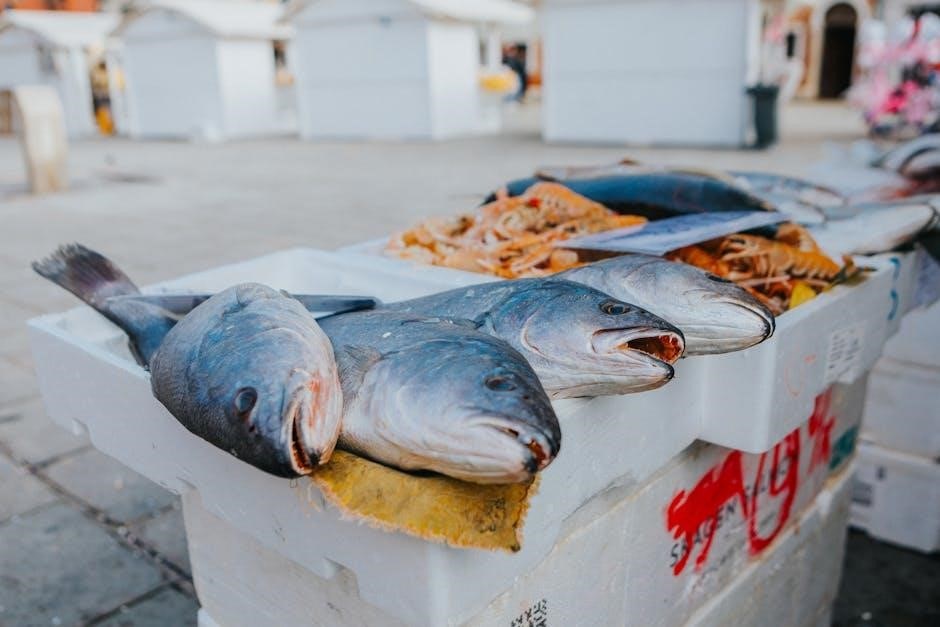
Accessing the Regulations PDF
The official Texas Saltwater Fishing Regulations PDF is available on the Texas Parks and Wildlife Department’s website. It can be downloaded for free or viewed online, ensuring easy access to all fishing guidelines and updates.
Where to Find the Official PDF Guide
The official Texas Saltwater Fishing Regulations PDF can be downloaded from the Texas Parks and Wildlife Department website. Additionally, a Fish ID & Regulations Mini Card is available for quick reference. Anglers can also access the guide through the department’s mobile app or by visiting local tackle shops and marinas. Ensure compliance by staying updated with the latest version of the regulations before each fishing trip.
Understanding the PDF Content
The Texas Saltwater Fishing Regulations PDF provides a comprehensive guide, including species identification, bag limits, and size restrictions. It outlines prohibited species and gear restrictions, ensuring anglers comply with state and federal laws. The guide also offers tips for sustainable fishing and highlights conservation efforts. This resource is essential for planning a lawful and enjoyable fishing trip in Texas coastal waters.
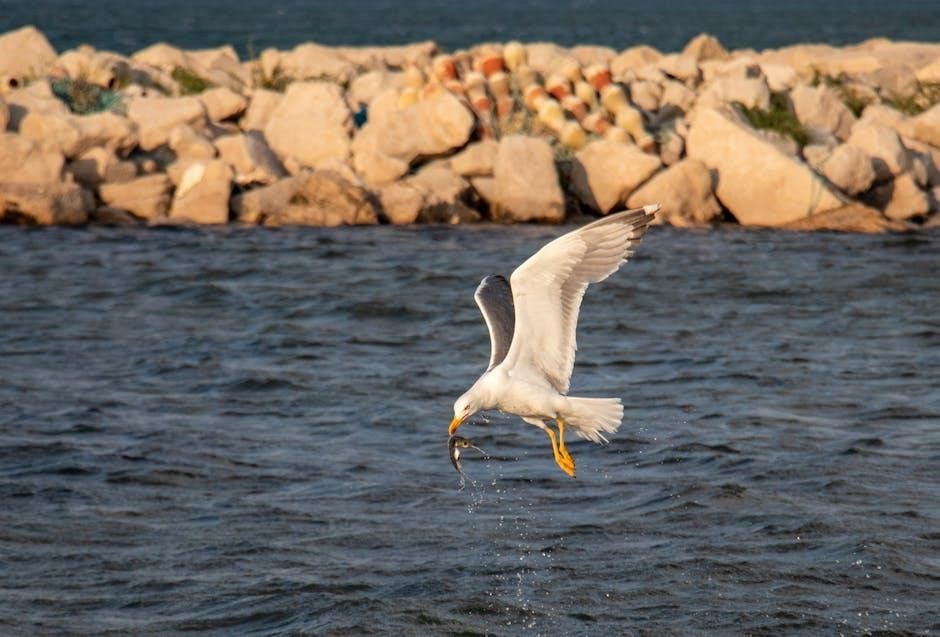
Staying Updated on Regulation Changes
Anglers should regularly check the official Texas Saltwater Fishing Regulations PDF and subscribe to updates from wildlife agencies to stay informed about rule changes and seasonal adjustments.
Importance of Regular Updates
Staying informed about updates to the Texas Saltwater Fishing Regulations PDF is crucial for anglers. Regulations often change to adapt to conservation needs, fish population trends, and environmental factors. Regular updates ensure compliance with new laws, preventing unintended violations. Anglers can access the latest information through official state resources or the Texas Parks and Wildlife Department website. Timely updates help maintain sustainable fishing practices and protect marine ecosystems for future generations.
How to Stay Informed
To stay updated on Texas saltwater fishing regulations, regularly check the official Texas Parks and Wildlife Department website. Subscribe to their newsletters and download the latest Texas Saltwater Fishing Regulations PDF. Additionally, use mobile apps like Fish ID & Regulations Mini Card for quick access to rule changes. Follow local fishing forums and join community groups for real-time updates and expert advice to ensure compliance and a successful fishing experience.
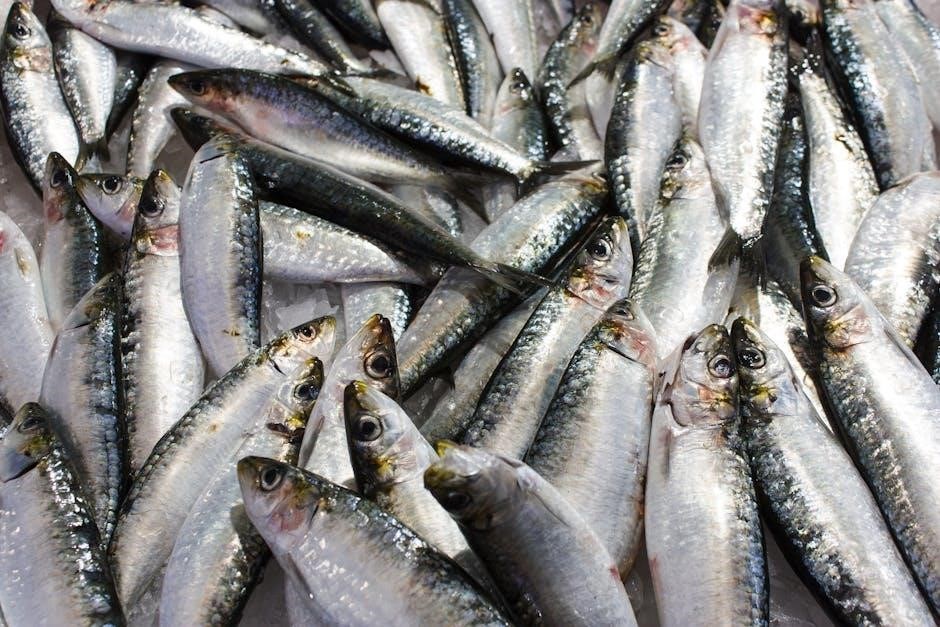
Special Considerations
Special considerations include shark fishing regulations and Red Snapper fishing rules. These protections ensure sustainable fishing and conservation of vulnerable species in Texas saltwater environments.
- Prohibited shark species include Atlantic angel and Basking sharks.
- Red Snapper fishing has strict bag limits and seasonal closures.
These guidelines help maintain marine biodiversity and ecosystem balance.
Shark Fishing Regulations
In Texas, shark fishing is regulated to conserve marine life. Certain species, like Atlantic angel, Basking, Bigeye sand tiger, Bigeye sixgill, and Bigeye thresher sharks, are prohibited. Anglers must obtain specific permits for shark fishing, and there are strict guidelines on catch limits and gear usage. These rules aim to protect vulnerable shark populations and maintain ecological balance in Texas waters.
Red Snapper fishing regulations
Red Snapper fishing in Texas is governed by strict regulations to ensure sustainability. The bag limit is typically two per person with a 16-inch minimum size. Seasons are often closed during spawning periods, and gear restrictions apply to minimize bycatch. A recreational fishing license is required, and enforcement by the Texas Parks and Wildlife Department is rigorous to protect this valuable species.

Penalties for Violations
Violations of Texas saltwater fishing regulations can result in fines, license suspensions, and even criminal charges. Penalties aim to protect marine resources and ensure conservation efforts.
Consequences of Non-Compliance
Violating Texas saltwater fishing regulations can result in penalties, including fines, license suspension, or revocation. Severe offenses may lead to criminal charges. Civil restitution may be required for illegally caught fish. Non-compliance undermines conservation efforts and can harm marine ecosystems. Adhering to regulations is crucial for sustaining fish populations and ensuring fair access for all anglers. Always check the latest rules to avoid legal repercussions and support environmental sustainability.
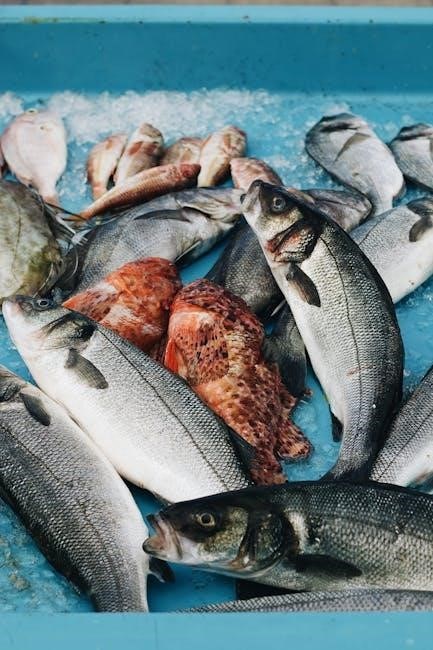
Public Resources and Support
The Texas Saltwater Fishing Regulations PDF offers comprehensive guides, including a laminated Fish ID card and online materials, to help anglers stay informed and compliant.
Available Guides and Materials
Anglers in Texas can access the Fish ID & Regulations Mini Card, a waterproof guide featuring images and rules for 24 common saltwater species. Additionally, the Fishing Regulations Booklet provides detailed information on bag limits, size restrictions, and gear guidelines. These resources are designed to help anglers comply with regulations and promote sustainable fishing practices. They are available online or at local tackle shops, ensuring easy access for planning a compliant and enjoyable fishing trip.
Community and Expert Advice
Engaging with the fishing community and seeking expert advice can enhance your understanding of Texas saltwater fishing regulations. Local fishing groups, online forums, and tackle shops often provide valuable insights. Experienced anglers share tips on adhering to rules and maximizing your catch. Additionally, the Texas Parks and Wildlife Department offers resources and workshops to help anglers stay informed and compliant with the latest regulations.